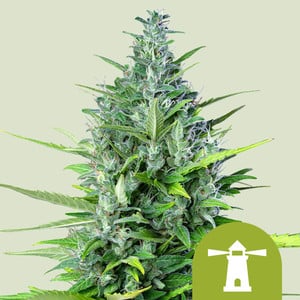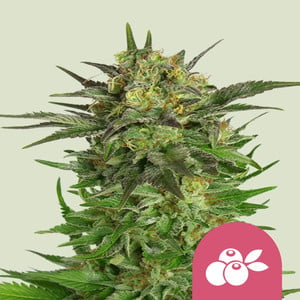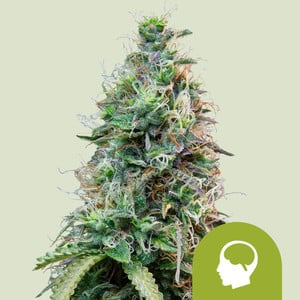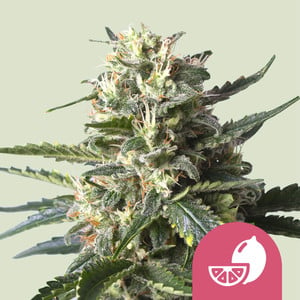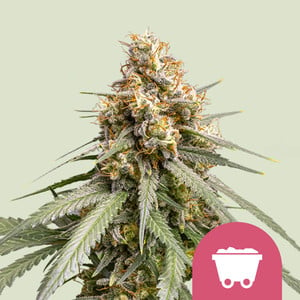Purple Haze
breed by Dutch-HeadshopHere you can find all info about Purple Haze from Dutch-Headshop. If you are searching for information about Purple Haze from Dutch-Headshop, check out our: Basic infos, Gallery, Degustation, Awards, Strain Reviews, Direct Comparisons, Lineage / Genealogy, Hybrids / Crossbreeds, User comments, for this cannabis variety here at this page and follow the links to get even more information. Or list all Purple Haze Strains (± 9) If you have any personal experiences with growing or consuming this cannabis variety, please use the upload links to add them to the database!
Basic infos
Purple Haze is an mostly sativa from Dutch-Headshop and can be cultivated indoors, outdoors and greenhouse (Where the plants will need a flowering time of ±70 days) Dutch-Headshop's Purple Haze is only available as feminized seeds.
Dutch-Headshop Description
Most people get introduced to Purple Haze through the classic rock anthem of the same name, released by Jimi Hendrix in 1967. However, Purple Haze is a real cannabis strain that many smokers treasure for its uplifting effects, mysterious origins, and cultural fame. After all, not every strain has a Hendrix tune named after it. Below, we explore Purple Haze in more detail, including its origins, genetic lineage, and more.
History of Purple Haze
Purple Haze, as its name suggests, is a member of the renowned Haze family of strains that left an unforgettable mark on the world of cannabis since its discovery in the 1970s. Unfortunately, the origins of many classic Haze varieties, including Purple Haze are, well, hazy at best. Below, we'll briefly outline some of the theories surrounding the history of Purple Haze.
Rumor has it that the original Haze was created in Santa Cruz, California, by two brothers, R. and J. Haze. The Haze Brothers apparently created their Original Haze cultivar from a mix of Mexican, Columbian, and Thai landraces. And, even in the 1970s, Haze weed is rumored to have fetched a high price and was loved for its euphoric effects and delicious aromas that combined notes of citrus and spice.
The Haze strain really blew up, however, once it was discovered and brought to Amsterdam by Sam The Skunkman—a Californian cannabis breeder and enthusiast who later took refuge in The Netherlands.
Once Haze got to The Netherlands, many now-beloved Dutch breeders experimented with the variety, creating countless new Haze strains, some of the most famous being Amnesia, Super Lemon Haze, Super Silver Haze, Neville's Haze, and Mango Haze. Unfortunately, the exact origins of the original Purple Haze remain a mystery. What we do know, however, is that Hendrix wasn't singing about the strain in 1967—instead, his song of the same name is reportedly about a unique LSD variety created by Owsley Stanley.
Genetic Lineage of Purple Haze
Like many old-school classic cannabis strains, the genetic origins of Purple Haze are shrouded in mystery. In general, however, the strain is rumored to stem from Haze and Purple Thai.
As we mentioned earlier, Haze is rumored to have been created by the Haze brothers in Santa Cruz, California, in the 1970s before making it to Holland by the hand of Sam The Skunkman. According to cannabis folklore, original Haze plants were tall sativas with a long flowering time that descended from Columbian, Mexican, and Thai landrace strains. Today, many varieties of Haze exist, offering a broad palette of aromas and flavors. In general, however, Haze varieties are known to be earthy and spicy, with fresh notes of lemon and other citrus fruits.
Purple Thai, Purple Haze's supposed second parent, is a renowned hybrid created by the breeder DJ Short. Also known as Oregon Purple Thai, DJ Short created this strain in 1979 after pollinating Chocolate Thai with pollen from Oaxacan (also known as Highland Oaxacan Gold) males. According to DJ Short, he first grew the strain out in 1980 and quickly started giving away clones of it soon after.
Physical Characteristics of Purple Haze
Several seedbanks and breeders sell Purple Haze seeds. These seeds generally produce sativa-dominant plants with typical sativa traits, including large internodal spacing, thin branches and long, skinny leaves. Once in bloom, Purple Haze plants typically produce elongated, airy flowers (also typical of sativa varieties) with an earthy, spicy aroma and accents of fresh citrus. As its name suggests, Purple Haze tends to take on beautiful purple hues, especially in cooler climates.
Properties/Effects of Purple Haze
Modern Purple Haze strains from breeders and seedbanks typically produce around 15–20% THC. While these THC concentrations may seem moderate compared to the ultra-high potency of modern hybrids, don't be fooled—Purple Haze is renowned for producing a very strong, euphoric high. Its aromas combine some traditional notes of earthy and spice with subtle floral overtones (reminiscent of lavender) as well as sweet berry hints. According to user reports, Purple Haze is typically rich in caryophyllene, myrcene, and limonene. However, it may also contain terpinolene, bisabolol, and other less abundant terpenes.
True to the Haze family, Purple Haze's effects are typically uplifting and energizing, leaving users in a creative, social, and blissful high. Thanks to her moderate THC levels, Purple Haze typically won't produce such intense effects, making for a versatile smoke that a wide variety of users can enjoy.
Some people refer to Purple Haze as the perfect "mood booster", and many also report enjoying the strain during the day, in the morning, and in the afternoon. In small doses, most users find this strain uplifting and energizing, leaving them in a pleasant, cheerful daze great for "getting things done". In larger doses, however, Purple Daze is known to produce an intense and long-lasting pseudo-psychedelic high that's beloved by experienced users.
Uses of Purple Haze
Purple Haze is a popular strain, both among recreational users and medical cannabis patients. Recreational users, for example, report smoking this strain:
• While listening to music, watching TV, or gaming
• On walks around the neighborhood or out in nature
• At parties
• While focusing on creative tasks
• In the great outdoors
Medical cannabis users are just as fond of Purple Haze and its uplifting effects. According to reports from patients, this strain may help with:
• Mood disorders
• Pain management
Purple Haze is a beloved cannabis strain with a ton of history, but that doesn't mean it can't cause side effects. Unfortunately, some users find that Purple Haze may leave them feeling:
• Paranoid
• Anxious
• Dizzy/light-headed
Cultivation/Production of Purple Haze
Original Haze strains are known to be lanky and tall, which can make them challenging to grow indoors or for anyone without a lot of experience. With their long, reaching branches and large leaves, it's usually best to use various training techniques to control the rapid growth of these plants. Moreover, their long flowering times can prove challenging for beginner growers, and their size can also be off-putting for outdoor growers trying to keep their gardens from drawing too much attention.
As mentioned earlier, Purple Haze is available in seed form from various seedbanks and breeders. While each variety is different, Purple Haze strains typically grow tall, have a long flowering time of up to twelve weeks or more, and produce good yields.
As her name suggests, Purple Haze typically produces beautiful purple flowers, which isn't so common among other Haze strains. Old-school Haze cultivars are also renowned for developing long, airy flowers, not the tight buds seen in more modern varieties.
Purple Haze: Actin' Funny and I Don't Know Why
Purple Haze is a classic strain loved for its characteristic Haze traits and potentially psychedelic, creative high. Unfortunately, its exact origins are murky at best, and who created the original Purple Haze variety remains a mystery. Nonetheless, various breeders and seedbanks still stock this classic, which continues to grace the gardens of growers worldwide.
Purple Haze Reviews
Purple Haze Degustation
Effect/Effectiveness
Smell / Aroma
Taste
Purple Haze Gallery
No images uploaded until now. Click here to upload imagesPurple Haze Comparisons
How is Purple Haze growing and effecting compared to other varieties? 0 seedfinder users uploaded direct comparisons with Dutch-Headshop' Purple Haze and compared this cannabis variety with 0 other strain(s).
Dutch-Headshop Purple Haze:Purple Haze Lineage / Genealogy
-
Purple Haze
»»»
Purple Haze
-
Purple Haze
(Probably)
-
Haze [pheno: Purple Pheno]
- »»» Santa Marta Gold x Wacky Weed [pheno: aka Chocolate Colombian] x Colombia
- Santa Marta Gold »»» Sativa
- Wacky Weed [pheno: aka Chocolate Colombian] »»» Sativa
- Colombia »»» Sativa
-
Haze [pheno: Purple Pheno]
-
Purple Haze
(Probably)
Purple Haze Hybrids & Crossbreeds
We found 0 direct descendants from Dutch-Headshop in the seedfinder strain database, here a short overview. To see all hybrids and their descendants, visit our Purple Haze Genealogy Page and check out all the direct crosses as like as the following generations.
Purple Haze User comments
Altogether we've collected 0 about Dutch-Headshop.Unluckily not one of this comments is in en!
Upload your info about this strain here:
Do you know something more about Dutch-Headshop? Please help to make this database better and upload/connect your information here!
Pictures
Pictures speak louder than words! Upload your "Purple Haze" Photos here and help other growers to get a better impression of this variety.Comparisons
Purple Haze VS. Strain direct comparisation formUser Reviews
Our strain reviews are multilingual, searchable and can be very detailed - including data about the grow, aroma, effects and taste! Please upload your Purple Haze Review here to help the other seedfinder users!
Medical Values
You have experience with the medical qualities of Purple Haze? Sharing your information here maybe can help other people!
Threads
You've stumbled upon a Purple Haze related thread into a forum or growers community? Connect it here and enable othe users to find this information fast and easy!
Videos
You found a related video with additional information or grow-infos about Purple Haze on YouTube? Please connect it here to the strain info page!
